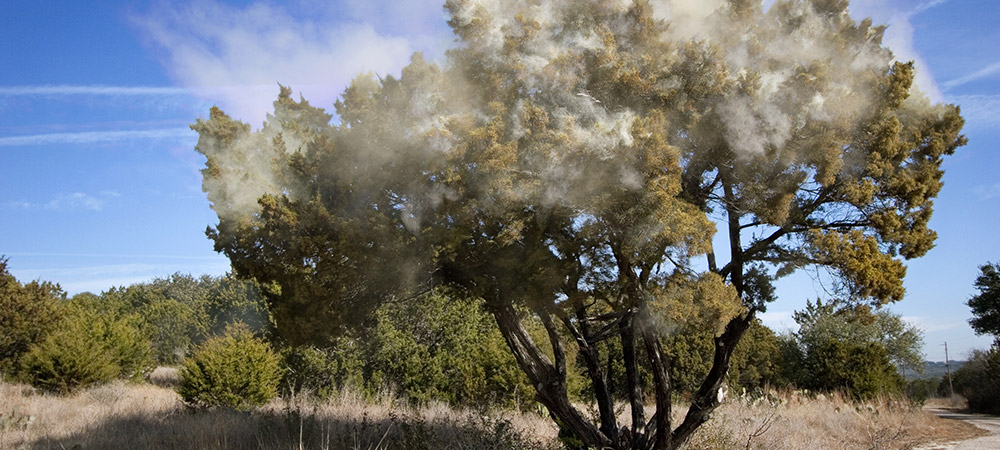Taking the Burn out of Cedar Fever: A new look at treatment options

If you have any ties to Texas, you are sure to hear anecdotes about the intimidating and vicious cedar fever. Grunts, moans, and complaints ensue for the entirety of the winter months. Cedar fever isn’t a sickness, a cold or flu that comes over Texas for the same time period, year after year. It’s an allergy.
Ironically, cedar fever isn’t a fever at all. It’s an allergic reaction to pollen that leads to symptoms like:
- Sneezing fits
- Runny nose
- Itchy, burning and watery eyes
- Headache
- Itchy throat
- Exhaustion
The producers of the pollen, the ashe juniper tree, also known as mountain cedar, are primarily found in Texas, but can reach as far north as Arkansas, Missouri, and Oklahoma. Pollination season is from December to March, making the winter months for southern folks not only chilly, but sniffly, too.
On warm and windy days, the mountain cedar tree releases pollen in a visual and robust way. Small grains are produced in a large abundance, creating some of the highest concentrated pollen counts recorded anywhere in the world. With a simple gust of wind, it looks like the clouds have come down to meet the trees, when in reality, huge puffs of pollen have been released by the wind and surround the branches. Once released, the pollen is so dense that some individuals have mistaken the pollen clouds for smoke. Not only is there a lot of pollen released, but it can travel up to 100 miles.
Many people try to treat the symptoms of mountain cedar allergy by taking antihistamines or other over-the-counter allergy remedies. There are ways to avoid the pollen itself, too:
- Vacuum with a HEPA filter
- Launder clothes after extended periods outdoors
- Wear protective clothing or dust mask to minimize inhalation
- Keep windows closed and stay indoors
While treating the symptoms or avoiding the allergen may provide temporary relief, it doesn’t solve the root of the problem.
How do you stop the cycle of cedar fever?
It’s been said that allergy sufferers can sneeze up to 200 times per day when cedar fever is in full swing. While some may opt to suffer through it, sneeze by sneeze, others have taken steps to eliminate their symptoms. Rather than avoiding the allergen all together, many people choose to safely expose themselves to the allergen in order to create long-term immunity using allergy drops. Allergychoices has helped many providers and patients incorporate the La Crosse Method™ Protocol using sublingual immunotherapy to treat the cause of mountain cedar allergies safely and conveniently, providing long-term relief to allergy sufferers.
By taking the allergy drop treatment daily at home, work, school or wherever you need to be, you can address the underlying allergic cause of mountain cedar or “cedar fever,” rather than temporarily masking the symptoms with medication that needs to be taken indefinitely.
For those with strong cedar fever allergies, a pre-seasonal “booster” can also be used to build tolerance ahead of the season with the objective of minimizing reactions once the season hits. While the pollen concentration may be “bigger in Texas,” the suffering doesn’t have to be.
Get help finding a provider near you who offers custom sublingual immunotherapy →
